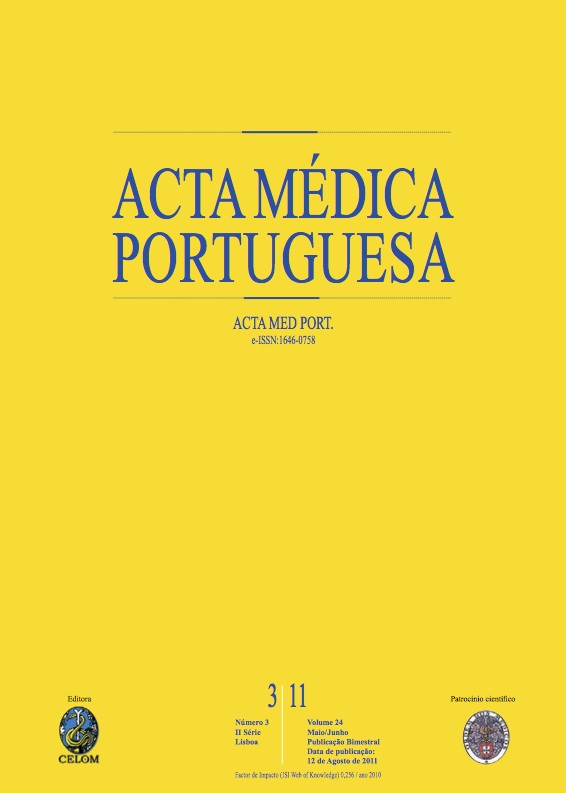Dores osteo-articulares: um caso da doença da HbSC/alfa-talassémia.
DOI:
https://doi.org/10.20344/amp.455Resumo
Sickle cell disease is an inherited chronic haemolytic anaemia whose clinical manifestations arise from the tendency of the haemoglobin to polymerize and deform red blood cells into the characteristic sickle shape (HbS), with vaso-occlusive phenomena, pain and organ damage. Sickle cell anaemia, the prototype disease, is the homozygous state and represents the most severe form of sickle cell disease. A variety of other sickle cell syndromes are a result of an interaction between HbS and certain variant haemoglobins as HbC and thalassemia. We describe the case of a 28-year-old, black man, with recurrent episodes of musculoskeletal pain. Physical examination revealed spenomegaly. Laboratory tests showed haemolytic anemia and microcytosis. The peripheral blood smear revealed frequent target cells. The high performance liquid chromatography (HPLC) detected the absence of HbA, increased HbA2 and the presence of HbS and HbC, in equal amounts. In this case, we want to draw attention to less common and non-rheumatic causes of musculoskeletal pain as well as alert to the importance of early diagnosis of sickle cell disease that can minimize and prevent many of its complications.Downloads
Downloads
Como Citar
Edição
Secção
Licença
Todos os artigos publicados na AMP são de acesso aberto e cumprem os requisitos das agências de financiamento ou instituições académicas. Relativamente à utilização por terceiros a AMP rege-se pelos termos da licença Creative Commons ‘Atribuição – Uso Não-Comercial – (CC-BY-NC)’.
É da responsabilidade do autor obter permissão para reproduzir figuras, tabelas, etc., de outras publicações. Após a aceitação de um artigo, os autores serão convidados a preencher uma “Declaração de Responsabilidade Autoral e Partilha de Direitos de Autor “(http://www.actamedicaportuguesa.com/info/AMP-NormasPublicacao.pdf) e a “Declaração de Potenciais Conflitos de Interesse” (http://www.icmje.org/conflicts-of-interest) do ICMJE. Será enviado um e-mail ao autor correspondente, confirmando a receção do manuscrito.
Após a publicação, os autores ficam autorizados a disponibilizar os seus artigos em repositórios das suas instituições de origem, desde que mencionem sempre onde foram publicados e de acordo com a licença Creative Commons









